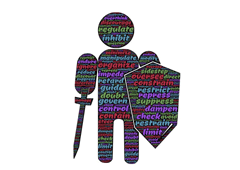



Context - Description of the key steps taken by an intercountry meeting organised by the WHO in 2019 to strengthen regional and national capacity to detect, verify and control emerging infectious diseases with epidemic and pandemic potential.
This is a faithful summary of the leading report produced in 2019 by : "Intercountry meeting on the strategic framework for prevention and control
of emerging and epidemic-prone diseases in the Eastern Mediterranean
Region
![]()
As a result of recurring epidemic threats, WHO has taken steps to strengthen regional and national capacity to detect, verify and control emerging infectious diseases with epidemic and pandemic potential through the development of an integrated strategic framework for prevention and control of emerging and epidemic-prone diseases. This report describes this strategic framework and relates an intercountry meeting organised by the WHO end 2018 to apply more specifically this global approach to the Eastern Mediterranean Region.
The major risk factors for the transmission of communicable diseases include population movement, disruption of routine public health services, impeded access to health care, damage to safe water and sanitation infrastructure, overcrowding, and disrupted surveillance systems.
In addition, environmental factors contribute to the increased frequency and severity of outbreaks in the Region especially in poor urban slum areas.
Further, gaps in preparedness and response to these emergencies are exacerbated by knowledge gaps, for example on the transmission mechanisms of pathogens, genetic diversity and its impact, and the causes of under- and non-reporting.
The framework outlines a roadmap for enhancing the capacity of the Member States to prevent, forecast, early detect and respond to epidemics and other emerging health threats.
The framework covers all emerging and re-emerging diseases with epidemic potential that are prevalent in a Region or have been reported in a Region in the past. It contains a set of evidence-informed best practices and disease-specific interventions for prevention and control of priority emerging diseases in the Region.
Two key documents were reviewed, finalized and adopted:
Among the 13 recommendations which are made:
To Member States:
To the WHO:
Global roadmaps for the prevention and control of epidemic disease are already established for various cases:
The countries in the Eastern Mediterranean Region continue to be hotspots for emerging and re-emerging diseases, including infectious disease outbreaks, which have a significant impact on health and economic development in the Region. Over the past decade, the public health landscape of this Region rapidly changed, as is evident from its vulnerability to repeated outbreaks from emerging infectious diseases. At least 11 of the 22 countries in the Region have reported major epidemics from emerging infectious disease with the potential for global spread.
End 2018, the WHO held a meeting with representatives of the ministries of health from 21 countries of this Region with the aim to promote evidence-based interventions, guidance and best practices for control and elimination of infectious diseases. The main issues of concern included a need for stronger preparedness and surveillance, enhanced vaccination and Water, Sanitation and Hygiene (WASH) programming, greater overall health investment, attention to antimicrobial resistance, and the importance of political will and funding support.
To ensure support for the framework and obtain feedback from key stakeholders in this Region, the meeting reviewed:
The strategic direction for universal health coverage in the Region in the context of emergencies was discussed, and the elements of health system resilience in complex emergencies, the linkage between universal health coverage and the Sustainable Development Goals of the United Nations, and ways to strengthen universal health coverage outlined.

This summary is free and ad-free, as is all of our content. You can help us remain free and independant as well as to develop new ways to communicate science by becoming a Patron!